|
Here's hoping all of you had a very Merry Christmas, Happy Hanukkah and a Fun New Year. In reflecting upon this past year, I realize that I've come across quite a few people during the course of my flaneurie for whom 2016 could simply not end soon enough. Whether it be due to personal issues, the passing of seemingly so many well-know people this year, the current political state of the world, or a combination of all three factors, I have found many walking around in a state of zombie-like shock or depression.
I followed the principles of American flaneurie that I outlined back in March of last year, and I can tell you that the people I either met or brought back into my life over the past year have changed it forever - all in an absolutely wonderful and personal way. Each person, whether they be writers, bloggers, co-workers, bartenders, aspiring actors, fellow commuters, old friends or even Goddaughters - all brought their own unique qualities and richness that have blessed me immeasurably. I only hope that I have been able to return some of those blessings in some small way.
And so 2016 has certainly not been perfect. I wanted to retire to devote my full-time to writing and the study of music and dance - and I could not. I wanted to travel more than I did, and I was not able. And the state of the world is not the best. But I did try to be a rigorous engager with all of those around me during the course of my daily life, and I was rewarded in ways I could not imagine. 2016 has given me new relationships that will hopefully last for the rest of my life. So I look forwarded to building on what I started in 2016, living 2017 to its fullest, with as pure a heart as I can muster, and resolving to wasting as little precious time as I have left, to living the life of an American flâneur. I'll be sharing my experiences here throughout the year. I hope you'll continue to join me. Happy 2017 everyone! © 2017 David Nogar All Rights Reserved
2 Comments
All Hallows’ Evening, or as we know it today – Halloween, is a major commercial holiday. If it falls on a weekday, the banks are still open, the mail still gets delivered, but more people in America seem to be celebrating Halloween than ever before. It seems to be a day in which many people feel that debauchery, and a celebration of evil, terror and death can go mainstream – all in the guise of good fun in celebrating the holiday.
And of course, when the door opened after you knocked – because you were in your own neighborhood – everybody tried to guess who you were behind that mask. Each doorbell was a social event – you didn’t just open your bag when the door opened expecting to have candy thrown into it. There was far more to the transaction. But that was it. Halloween was essentially for kids.  But now it’s for adults. Adults who go take the gruesome aspects of Halloween much more seriously, and who seem to revel in being able to take their depiction of horror to new limits, and to celebrate ghoulishness – no doubt completely unaware of the traditions they are celebrating. At the risk of sounding like a prude, a not-too-healthy sign of the times in post-Christian America, I think. In her classic 1919 study of the history of Hallowe’en, Ruth Edna Kelley surmised that if one were to ask the ancient pagans who was the greatest of their gods, that their sun-god would probably be the most important. Depending on whether they were Greek or Egyptian, the name of that god would be Apollo, Horus or Osirus – but it’s all the same god. And it makes sense. I was quite struck by that when I read this, because of the significance Apollo plays in end-time eschatology and in Freemasonry. But that is a topic for another post. But as Ms. Kelley writes, “The sun has always marked out work-time and rest, divided the year into winter idleness, seed time, growth and harvest…..” So the sun-god therefore was critical in the minds of agrarian peoples to their harvest, and therefore their survival. “The pagan Hallowe’en at the end of summer was a time of grief for the decline of the sun’s glory, as well as a harvest festival……” Hallowe’en as a festival is generally acknowledged to have originated with the Druids, who were the priests of the Celts who populated Britain and Gaul centuries before the time of Jesus Christ. Only the Celts and the Teutonics (originators of modern-day Wiccan practices) celebrate an occasion similar to Halloween in America.
As the Israelites did, the Druids made human sacrifices to Baal, often burning them alive in wooden images, which were meant to urge the god to protect and bless the crops and herds. Samhain, or All Hallows’ Evening originally was a festival that marked the end of the harvest season, and the beginning of the ‘darker half’ of the year. It, like Beltain (e.g., May Day) was seen as a time during the year when the boundary between this world and the Otherworld could more easily be crossed. It was a time when traditionally the souls of the dead were thought to revisit their homes seeking hospitality. In fact, feasts were often held in the home to beckon the souls of dead kin with a place set for them. Jack-o’-lanterns were originally carried by persons during Hallowe’en to frighten evil spirits. Of course, this type of thing is forbidden by the Bible. Deuteronomy 18:10-12 strictly forbids any communication with the dead. Now if you don’t think this kind of thing is possible, then I guess it’s no big deal. I personally think it is possible, or the Bible wouldn’t have prohibited it. I think God is only trying to protect us with this commandment, as what we think may our dear, deceased Aunt Harriet may actually be something very sinister, posing as Aunt Harriet.
So to conclude this somewhat offbeat post, let me say this: Don’t pay too much attention to this holiday we call Halloween. I personally believe that there are spiritual things that we cannot see, but which can nonetheless affect us - for better and for worse. “For our struggle is not against flesh and blood, but against the rulers, against the authorities, against the powers of this dark world and against the spiritual forces of evil in the heavenly realms.” Ephesians 6:12
Messing around in things with which you have no knowledge can lead to unintended consequences that may not be very good. In fact, they could be very bad. To the uninformed or unprepared, dabbling or celebrating in a ‘holiday’ with this type of history can potentially open oneself up to unwanted and evil influences in your life. Why not just prepare for the triduum of Allhallowtide instead? Give the celebration at the end of October and beginning of November a whole different focus..... Celebrate Hallowe'en as the Eve to All Saints' Day, in much the same manner as we celebrate Christmas Eve today (or at least we should). Celebrate and reflect upon All Saints' Day (November 1) as a day to honor all of the saints and martyrs in your faith. Then follow with a similar reflection on All Souls' Day in remembrance of all of those dear to us who departed this life ahead of us - and with whom we hope to be reunited some day. When practicable to do so, a visit to a cemetery where love ones are interred, to simply reflect on the blessings they've been to our lives, and perhaps honor them with fresh flowers or other remembrance on their graves, is perhaps a very nice way to uplift our own hearts and spirits. A far better way to put yourself in the proper frame-of-mind to engage in a new American flânerie, to meet and engage with new friends, and to prepare for the truly joyous holiday season ahead, I think. © 2016 David Nogar All Rights Reserved I have never really smoked. Up until very recently, the last time I smoked was one of my father’s Phillies panatella cigars over 50 years ago. I did it, because that’s just what boys did when they reached a certain age. And I must say, it really did nothing for me – other than burn the lining of my mouth and make my tongue taste like I licked out a stale ashtray – the taste of which an entire bottle of Scope mouthwash would not ameliorate. Consequently, I remained a non-smoker for over 50 years. That is, until I recently saw an Instagram post by my favorite blogger, freelance engager and all-around best pal, Lisa M. Barr. She was holding a Perez Carrillo cigar next to a glass of 12-year old Caol Ila single malt scotch with the simple observation, “End of a tough day, #perezcarrillocigars & #caolila12 makes everything much better.” I don't know. How can you argue with that? © 2016 Lisa M. Barr All Rights Reserved. Used with Permission. I never tried either. But Ms. Barr’s post made a believer out of me, and I knew immediately this was something I needed to check out. And who better to do it with than the owner of the lovely hand holding the stick and the author of that post? And so after some minimal commiseration regarding our choice of venue, we elected to sample the wares of Club Macanudo (her suggestion, of course) in New York City. And a fine club it is indeed, located in Central Park East, outfitted with mahogany furnishings, soft leather chairs and sofas, and a fine menu of cigars, spirits and food. Oh, and here’s a wonderful thing – they have a dress code. So no one gets in wearing tee shirts, athletic attire, sneakers, shorts, or the dreaded flip-flops. Not only is that attire prohibited, it is strictly prohibited. Needless to say, I started loving the place even before I walked through the front door. Upon entering the establishment, one is immediately met with a very subtle aroma of smoke. It is however, not at all like walking into a smoky bar, as the tobacco consumed here is fine tobacco – not the cigarette variety one would find in your typical bar, where smoking is even still permitted. And the state-of-the art ventilation system does a remarkable job. There is no smoke in here – even though everyone is smoking. So you’re not going to leave here with a smoky smell in your hair or clothing. The ambiance of the club is rich, quiet and refined. But there’s an added ‘clubby’ element in here, and similar venues like it. Modern, mainstream American culture today tends to view smokers almost as outcasts – as people who have a problem or an addiction that really should be curbed – and perhaps even shunned. The cigar aficionados at venues such as Club Macanudo of course, know better. Most inviting interior views of the Club Macanudo at 26 East 63rd Street in Manhattan. However, such disdain from the culturally uninformed in and of itself immediately creates a special bond among those who refuse to succumb to societal pressures and who continue to partake – even if they’ve never met one another before. And so, this place, and others like it, really is a ‘club’ in the truest sense of the word, and consequently a very refined place with which to engage in quality Social Interaction so necessary in the art of American flânerie. The smoking ban in New York City went into effect in March 2003, followed in July by a state smoking ban that even further restricted smoking in public places. The cigar clubs and smoking rooms operating prior to 2003 have a ‘grandfathered’ exemption. But even traditional establishments such as Keens Chop House with their thousands of churchwarden pipes on the ceilings, had to go smokeless. It is now extraordinarily difficult for new venues to open, given the plethora of agencies involved with applicable regulations along with the issuance of building permits, alcohol, tobacco and distribution licenses. So these establishments are in fact rather special, unique places. Club Macanudo at 26 East 63rd Street is currently my favorite of these clubs. The Carnegie Club at 156 West 56th Street would be a close second, though both have very different characteristics. As for me, my preference is to do the Carnegie Club for a quiet, mellow late lunch, and default to Club Macanudo, which offers a more substantial food menu, for dinner. The bar and lounge area at the Carnegie Club at 156 West 56th Street in Manhattan. The cigar menus at these venues are often more varied and descriptive than wine lists at fine restaurants. Examples of such descriptions include, “Scent of clean, crisp hay with notes of nutmeg, spice and toasted almonds,” or, “Burst of full-flavored spice which settles into a medium body with subtle notes of cherry, pepper and cassis.” I also became quite curious as to what a described ‘creamy’ texture felt like in a cigar. Ms. Barr was more than happy to oblige my curiosity by ordering for me a Macanudo Gold Label cigar that, upon the first and subsequent draws, felt like velvet rolling around in my mouth. So that’s the sensation of a creamy cigar, eh? How could smoke even feel that way? A Phillies panatella it was not. Having since become a novice aficionado, I still look back fondly on that cigar chosen by Lisa Barr, which nonetheless remains my most memorable smoke so far, as I continue upon a path of further exploration. Finally, to enjoy such a smoke with a fine bourbon or a rye Manhattan cocktail, excellent cuisine, and particularly in the company of an engaging and sophisticated friend, is no doubt among the most sublime pleasures this life can offer. Ergo, my Social Interaction recommendation for the month. Enjoy. By the way, in the final analysis, this reviewer's conclusion is…… Image on Left © 2016 Lisa M. Barr All Rights Reserved. Used with Permission. Lisa M. Barr is an award-winning lifestyle and wedding blogger and writer, including the 2010 Bridetide.com Top Wedding Blog Winner and the Bridetide.com Top 100 Wedding Blog Winner the following year. She is also on the Board of Wish Upon a Wedding-NYC, a non-profit organization dedicated to helping couples in need. Follow her on her Facebook page as Yours in Bridal, and on her Instagram pages @bridalease and @iamcoulturechaos. The scope of her knowledge and posts might open up a whole new world for you. I think this blog post here just might be a case in point. © 2016 David Nogar All Rights Reserved
Bulee ‘Slim’ Gaillard was an American jazz musician, singer and songwriter born on January 4, 1916. There remains some dispute regarding the place of his birth, with some sources asserting that he was born in Detroit. Gaillard himself claimed to have been born in Santa Clara, Cuba where he spent his childhood picking bananas and cutting sugar cane. In a BBC documentary done on his life, he wistfully reminisced that he never really had a childhood – that he only remembers working from his earliest memories. His father, Theophilus Rothschild was of German-Jewish ethnicity, while his mother, Maria (Mary) Gaillard was Afro-Cuban. It’s interesting to me that he took his mother’s maiden name as his surname. His father was a chief steward for a steamship line, and he would sometimes accompany him on ocean voyages – which is apparently how he inadvertently got left behind and subsequently stranded on the Isle of Crete at the age of 12, for almost 4 years. So, think about this: A 12-year old youngster gets left by his father on the island of Crete – an ocean away from his home, at a place where a completely different language is spoken, and where they don’t even use the same alphabet. He never saw either of his parents again. While on Crete, he picked-up a few words of Greek and initially made some money making shoes and hats. Remember, this is a 12-year old. At some point, he started working on boats serving eastern Mediterranean ports – mostly to Beirut and Syria, where he learned to speak Arabic. His native language was Spanish, but he also subsequently learned to speak German, Greek, Arabic, Armenian and finally English. Sometime, probably in 1931, he re-crossed the Atlantic on a ship that he reportedly hoped would ultimately get him back to Cuba, but upon arrival in New York, he never got off, and ended up in Detroit, probably via the Welland Canal. When he got there, he had nothing, and apparently didn’t even speak English. But in his own words, “I learned how to survive. When I got to Detroit, I found that there were Greeks and Arabian people there, so naturally I was more at ease with them.” In Detroit, he was taken in by an Armenian family who owned a store, where he watched over the family’s children. He apparently tried making some money at prize-fighting; drove a hearse with coffins filled with bootleg liquor for the Purple Gang during Prohibition; worked in a slaughterhouse; trained as a mortician; and allegedly became friends with Al Capone. While driving the hearse for the Purple Gang, he became interested in American jazz, and realized that it could become a viable way to earn a decent income. He consequently began taking evening courses in music and began to teach himself on a number of musical instruments – becoming proficient on piano, guitar, tenor saxophone and vibraphone. At about this time he entered vaudeville with an act in which he reportedly tap-danced while playing the guitar. After meeting and receiving encouragement from Duke Ellington backstage in Detroit, he made his way to New York City, determined to make it in the music and entertainment business. By 1936-37, he teamed with bassist, Leroy Eliot ‘Slam’ Stewart, who had a unique musical style of bowing his bass while humming the same notes an octave higher. The duo billed themselves as, ‘Slim and Slam,’ of course.
Remember, just eight years before, this young man was homeless in Detroit after being abandoned as a child in Crete for almost four years, and could not even speak English. The proficiency and rapidity with which he became fluent in the English language (with no perceptible accent) is really nothing less than astounding. He was not formally educated. When he lived in Cuba as a child, he worked as a laborer. With this initial success came a long-running radio program and a chance to appear as part of a specialty swing number with Whitey’s Lindy Hoppers in the film, “Hellzapoppin,” in 1941. The segment below provides a good opportunity to see ‘Slim and Slam’ in their prime - along with probably the most exuberant and athletic swing dance sequence ever put on film. Classic 'Slim and Slam' open this specialty sequence in the 1941 film, "Hellzapoppin.' But the real stars here are the dancers who were part of Whitey's Lindy Hoppers from the Savoy Ballroom. I'm fairly confident you will never see another swing dance sequence like this in your life. Of all the dancers in this number, only one survives - Norma Miller, - who at 96 years old, was the dancer wearing the chef's hat in the video above. One of my ambitions in life is to meet this remarkable lady before either one of us dies. As for the musicians in the sequence above, the vocalist, pianist and guitarist is obviously Slim Gaillard (a.k.a., McVouty); the bassist is Leroy "Slam" Stewart; the cornetist is Rex Stewart (from Duke Ellington's orchestra); and the drummer is Cee Pee Johnson (a regular at a number of Central Avenue jazz clubs in Los Angeles). I believe the clarinetist may be Jack McVea, but I'm not certain (note also that he's playing a metal clarinet). I do not know the identity of the trombonist. In 1943, Slim Gaillard and Slam Stewart were both drafted, with Gaillard going into the U.S. Army Air Force and serving as a pilot flying B-26 bombers in the Pacific. After being discharged from military service in 1944, Gaillard teamed with bassist ‘Bam’ Brown as, what else – ‘Slim and Bam.’ During this period, another Gaillard novelty composition was written and recorded entitled, “Cement Mixer,” which became another popular hit, along with “Down By the Station,” which became a classic children’s song. As the 1940’s wore on, he continued with his hip, eccentric, actually surreal style of entertaining, and like many jazz musicians of the period, he transitioned into the bebop idiom, playing with the likes of Charlie Parker and Dizzy Gillespie. I characterize his style as surreal because of his very off-beat sense of humor and playing which nonetheless was still indicative of an extraordinary talent. For example, the recording of his song “Yep Roc Heresy,” was banned by one radio station as degenerate – even though it was simply a recitation of the menu from an Armenian restaurant. Slim always seemed to have the last laugh. He is also the only musician I’ve ever seen who could credibly play the piano with the backs of his hands, or play the guitar with his left hand fretting from the top of the neck. The performance below from The Steve Allen Playhouse which aired on March 4, 1963 provides a good example of Slim Gaillard’s classic comedic talents as a jazz and popular musician. Classic Slim Gaillard - a very talented multi-instrumentalist and outstanding jazz musician. The only musician I ever saw who could credibly play a piano with the backs of his hands. The sequence where he plays alternatively with the front and backs of his hands, elbows and right shoe is nothing short of amazing. Not only does he not miss a beat, he hits all the right notes - and makes it look so easy in the process. It's not. You've also gotta love the way he fit the program sponsors (and Westinghouse Broadcasting) into his lyrics. A savvy entertainer indeed. From The Steve Allen Playhouse that originally aired on March 4, 1963. From the latter part of the 1940’s through the 1950’s, he took up semi-residency at Billy Berg’s Swing Club on Hollywood Boulevard, appeared at Birdland and Downbeat in New York City, and toured with Norman Granz’s Jazz at the Philharmonic. Jack Kerouac even recounted his encounter with Slim Gaillard at a San Francisco club in his classic beat novel, “On the Road.” In the 1960’s and ‘70’s, Gaillard turned to acting and began guest appearing in television shows such as Mission Impossible; Charlie’s Angels; Marcus Welby, M.D.; and Medical Center, and in the mini-series, Roots: The Next Generation, as Sam Wesley. He was apparently pretty smart with a buck too, and with his show business earnings, for a period of time ran a motel in San Diego, owned an apple orchard outside of Tacoma, Washington, and owned some real estate in Florida. Slim Gaillard was also Marvin Gaye’s father-in-law. His daughter Janis married Marvin Gaye, and she gave birth to Marvin Gaye’s only child – fashion model, singer and actress, Nona Marvisa Gaye. In 1982, he returned to music at the suggestion of Dizzy Gillespie, and toured Europe extensively, making London his home from 1983 on. He died from cancer on February 26, 1991 at the age of 75. So, why have I spent so much time in telling you about this man? And what does he have to do with being a flâneur in 21st century America? I personally believe there is something to be learned in his approach to life. In his own words, he never looked back. He kept moving forward – even though he wanted to look back, and it was painful for him not to do so. And this is what most of us do. We look back, and we fret at why things didn't go the way we wanted them to. And we don't move forward. We stay stuck. But look at what he accomplished in his life by not looking back - or by fretting over the present. Here was a 12-year old child who was essentially abandoned in a foreign country, halfway around the globe from his own home, never to see his parents or his home again. I cannot even begin to fathom the trauma and despair and sadness this young man experienced so early in his young life. Yet he did not allow the circumstances of this life to crush him. He coped and persevered, and ultimately became remarkably successful. I personally believe he had a guiding Hand. And perhaps that Hand is evidenced in one of his songs, “Anytime, Anyplace, Anywhere” – an uncharacteristically somber song that he generally only sung by request, and when he did, tears would reportedly often flow from his eyes.
One of his longtime show business associates who worked with Gaillard from 1965 through 1972 was Mariah Adams, aka Marian Vee, who asserts that the song was in actuality a prayer that came to him from God. None of us will ever know that for sure, except perhaps Slim. But when you research this man, it becomes evident that despite the incredible fears, sorrows and loneliness this life must have given him, he remained universally known for his genial disposition, off-the-wall sense of humor, intelligence and talent, and that he always had a smile for those around him. There was no self-pity here. So you look at this talented, hip, surreal jazz musician at his peak by the late 1940's, and when you come to realize the circumstances of his life story, you can't help but marvel how he evolved into the entertainer he became. In 1986, the BBC produced a remarkable four-part series on this man's life and music. Like Slim himself, the documentary is a bit surreal in parts, but it probably provides the most in-depth look at this man we will ever get. He was clearly a free spirit, being guided I think, by something greater than himself. Always moving forward. Always reaching out to others with a smile and wit. Making those around him laugh. The qualities of a good flâneur, I think. And despite the fact that few people today remember him, he led a most remarkable life. Certainly an instructive example for me. Maybe you too, once you get to know him. © 2016 David Nogar All Rights Reserved If you're so inclined, the 4-part, 4-hour BBC documentary entitled, "Slim Gaillard's Civilization," is currently available on YouTube, and you can access each of the episodes from the links below. There are also many, many other videos of Slim Gaillard performances available on YouTube for those interested in researching him further.
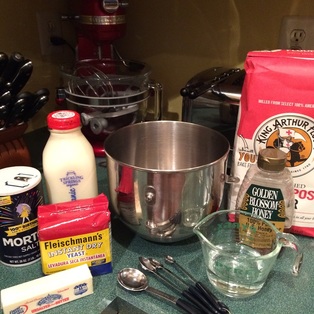 You will need the following ingredients: 4 Cups - Unbleached, All-Purpose Flour 1 Cup - Whole, Organic Milk ½ Cup - Water 1 Tblsp - Instant DRY Yeast 6 Tblsp - Unsalted Butter, Softened 2-4 Tblsp - Honey 2 Tsp - Salt DIRECTIONS Whisk together the flour and yeast in the mixer bowl. The flour and yeast should be thoroughly mixed, so whisk briskly for at least a minute. Combine the whole milk and water in a 2-cup capacity, microwavable measuring cup, and microwave the milk/water until it is approximately 105°F (40-60 seconds on ‘High,’ depending on your microwave). Use a food thermometer after removing the measuring cup from the microwave to ensure precise temperature. If it’s not hot enough, place the milk/water back in the microwave (without the thermometer, of course), and heat incrementally until 105°F is reached. If the milk/water is too hot, simply leave it to cool to 105°F. The proper temperature is important, because the dough needs to be warm enough to allow the yeast to bud, and the dough to rise. If the solution is too hot, you’ll kill the yeast. Too cold, and the yeast won’t do anything. Place the mixer bowl on your stand mixer and mix at low speed with a dough hook. On a KitchenAid mixer, this would be speed #2. Add the butter in 1 tablespoon increments, then slowly add the heated milk/water mixture, followed by the honey, then the salt. (Note: You’ll have 2 tablespoons of butter left over from your stick. Place the remainder in the refrigerator for the time being, as you will use it later.) Use a bowl scraper to scrape the sides of the mixing bowl if necessary, while adding the ingredients. I prefer one with a handle, only because it’s easier to use. Once all the flour is moistened, increase your mixer to medium speed (#4 on a KitchenAid), and beat for 7 minutes.  At the end of the 7 minutes, remove the dough from the mixer, and place it on a lightly floured countertop (I also use a silicone food mat). The dough should be smooth and somewhat shiny. Knead the dough by hand for a minute or two, shaping it roughly into a football. Then cover it with plastic food wrap and let it rest for 15 minutes. The dough should approximately double in size during that time if the yeast is properly active. Remove the plastic food wrap from the dough and knead by hand for another couple of minutes, gradually working it into an elongated shape for easy placement into the pain de mie pan.  Insert the dough into a pain de mie pan that has been greased on all sides with unsalted butter, using the remainder of the stick you had placed in the refrigerator. Note: Using butter on the sides of the bread pan allows the bread to brown nicely when placed in the oven. Depress the dough with your knuckles or fists so that it uniformly covers the entire bottom of the bread pan. Slide the lid on the pain de mie pan, leaving about an inch opening at the end, covering that opening with plastic food wrap. Don’t forget to also grease the underside of the lid with your remaining unsalted butter.  If you are not using a proof box, you can use your oven for the second dough rise. Place the bread pan on the center rack of an unheated oven to allow the dough to proof (e.g., rise) for 30-40 minutes. I also pre-boil a pot of water, and place the pot of boiling water on the bottom of the oven when I place the dough in the oven to proof. The moisture and heat from the boiling water helps the dough to rise faster. When you see the dough coming up through the 1-inch opening you left at the end of the bread pan, remove the pan from the oven, and the lid from the pan. Deflate the dough with your knuckles or fists, then slide the lid fully back on the pain de mie pan. Preheat the oven to 425°F, placing the bread pan on the center rack for 20 minutes. Make sure that the position of the pain de mie pan is such that the lid slides towards you when you place it in the oven. At the end of 20 minutes, open the oven door and carefully slide the lid of the pain de mie pan completely off, placing the lid in your sink or other safe place. I use silicone potholders for this operation. Remember, you’re handling metal that is 425°F. Leave the bread pan baking in the oven without the lid for another 8-15 minutes – depending on how brown and thick you want your crust. When the bread has browned to your desired level, remove the bread pan from the oven, and let sit for 5 minutes. The bread will shrink slightly during that time, allowing you to easily remove it from the pan.  After the 5-minute cooling period, I gently run a small icing spatula around the perimeter the bread (but you can also use a standard butter knife). Spread a clean kitchen towel on your counter and, using potholders (as your bread pan will still be extremely hot), pick the bread pan up by the ends and slowly tilt the pan away from you, directly over the kitchen towel. The bread should simply tumble out of the pan onto the towel. Place the bread on a cooling rack for at least 30 minutes before slicing. The first slice is always the best!  Required Equipment Probably the most critical item you’ll need to bake a standard Pullman loaf is the bread pan. I use Amco Food Service Pullman Pans with sliding Lids, and I find them to be the best bread pans I’ve ever used. They’re heavy-gauge, aluminized steel, commercial bakery pans. And perhaps most important of all, they have a silicone coating that allows the bread to simply slide out, and clean-up is a snap – ‘cause nothing sticks. These pans are available from Amazon. Just click on the links above to see them. A standard dial pocket food thermometer is what I use to ensure my milk/water mixture is at 105°F. Not sure how you can achieve that without one. You can get these for about $5. A 2-cup capacity Pyrex glass liquid measuring cup is also virtually essential to get your milk/water mixture to the proper temperature using a microwave. About $7-$9. Standard sets of dry measuring cups and measuring spoons are probably also essential. Some bakers are experienced enough to gauge by dead reckoning. But I know I’m not. You actually don’t need an electric stand mixer with a dough hook in order to make your dough. Indeed, people have been kneading dough by hand for millennia. You can mix the ingredients manually in a bowl until the dough reaches a consistency where you can take it out and knead it by hand. But figure on allowing yourself at least an extra 20 minutes to do that. Good exercise, though. If you do use an electric mixer, make sure it has a powerful enough motor to handle the density of the dough. My choice would be a standard KitchenAid, but you’ll need a fair amount of dough to get one (sorry). And So Why Is It Called a Pullman Loaf? Pullman loaves were originally called pain de mie by the French, and were baked by European bakers beginning in the early 1700’s in order to minimize crust. In the United States, the Pullman Company selected this type of loaf for standard use in all of its railroad dining cars, simply because its brick shape made it stackable, and it conserved space in the very compact dining car galleys and pantries operated by Pullman. Given that most people alive today only know of Amtrak as an operator of rail passenger service in the United States, few probably realize that up until December 31, 1968 – the Pullman Company operated virtually all sleeping car service in the country, and at its peak in 1925, operated a fleet of 9800 cars, employing 28,000 conductors and 12,000 porters. Observation-lounge bar car Hickory Creek operated on the New York Central's 20th Century Limited between New York and Chicago from 1948 until the mid-1960's. The car also had 5 double bedrooms. The on-board services, amenities and equipment offered by the Pullman Company were considered to be so superior, that virtually all famous trains operated during the last century, such as the Pennsylvania Railroad's Broadway Limited, and the New York Central's 20th Century Limited were operated for most of their existence as extra-fare, all-Pullman trains - meaning that all the railroads did was to pull the cars that were actually operated by another company - not the railroads themselves.
I sometimes wonder how many Americans today even know what a Pullman car is. Yet as recently as only 50 years ago, they were as much common-knowledge as Western Union telegrams. The company was headquartered on the South Side of Chicago. When company founder George Pullman died in 1897, Robert Todd Lincoln, son of Abraham Lincoln, was named as company president. In 1911, he was named chairman of the board of the Pullman Company, and remained in that position until 1922. He died in 1926. So there you go. More information about Pullman loaves than you could ever possibly imagine. Enjoy the bread! © 2016 David Nogar All Rights Reserved Note: If viewing Part 4 on an iPad or other tablet, this particular post is best viewed in a landscape orientation due to some formatting issues specific to the mobile environment. Smart phones are fine in portrait mode. Finally, those of you following this blog for its lifestyle perspectives may be wondering about the purpose of all of these initial, perhaps overly philosophical postings, and why this one in particular addresses a topic that could be considered by many as so morose. Because we all have to deal with it.
How we react to the hurt can have enormous consequences regarding the quality and fulfillment of our lives. And so I felt that it was important to establish some basic tenets of Social Interaction, because I view it as such a key element in the pursuit of flânerie – which happens to be my adopted personal approach for maximizing the quality of my remaining life, and which I have also chosen to share with others through this blog. All too often I find that the people with whom I interact are struggling with the same issues that I am - but nobody seems to want to discuss them openly. Instead, most prefer to construct facades of perfection in their lives for the benefit of others that have no relationship to reality. As a result, their struggles are unaddressed, and therefore unresolved. And the hidden despair and loneliness simply continues, albeit perhaps somewhat repressed. And of course with the advent of the Internet and social networking sites such as Facebook, we've all taken the perpetuation of 'happy face' facades to a whole new globalized level, haven't we? So with this posting, along with all of the other previous material that has been uploaded onto The American Flâneur blog and website, I think we’ve essentially established an important prerequisite framework with which to start truly enjoying what this life has to offer, face-to-face with our fellow human beings, along with some approaches to handle the pitfalls we're definitely going to encounter along the way. So, here we go. It's time to kick-ass and make the most out of life. © 2016 David Nogar All Rights Reserved I must give my profound thanks to a cherished friend and award-winning blogger, Ms. Lisa M. Barr, who reviewed the preliminary draft of what became this 4-part post, and who was kind enough to provide her insightful comments regarding this difficult topic and my treatment of it - although I'm positive I didn't follow anywhere near enough of her very sage advice. Ms. Barr is just a wonderful lifestyle and bridal writer and blogger, and you can follow her on a number of her own social networking sites, a couple of which can be accessed by clicking on the icons below.
Now as much as it pains me to say this – as it is by now quite apparent that I am an enthusiastic advocate of quality bars as social institutions, particularly in the pursuit of flânerie – one thing I would not do when you’re hurting, is to go to your local bar and drown your sorrows in a half dozen or so cocktails, crying on the shoulder of your favorite bartender.
But perhaps more importantly, the consumption of alcohol does not ameliorate the effects of the melancholy. In fact, if you’re drinking by yourself, it only makes it worse. So if you’re sad when you walk into the bar, you’ll no doubt be about ready to kill yourself by the time you have to leave (especially after you get the bar tab).
I truly believe the best bet is to follow the points summarized in Part 2, to pray (yes, that's right, pray), and to just keep moving forward in terms of continued constructive Social Interaction. And that would be my best (and really only) advice to anyone, when the doors of friendship and love slam shut. You really have very little, if any, control over the feelings or perceptions of others. When you're rejected or betrayed by someone dear, it goes to the very core of your self-worth. It can cripple you if you let it. I get that. But you really need to suck it up and keep moving on. And that's what this series of postings is intended to help you do. So let's wrap all of this up in Part 4. © 2016 David Nogar All Rights Reserved Note: If viewing Part 2 on an iPad or other tablet, this particular post is best viewed in a landscape orientation due to some formatting issues specific to the mobile environment. Smart phones are fine in portrait mode. So, continuing from Part 1 of this post, when a door slams shut in my life with someone who had previously added so much to the quality of it, here are some things I hope that I will have the ability to do, in terms of strength, awareness and self-discipline, and I would respectfully suggest, you should too:

We'll continue to talk about the recovery process, including what not to do, and how to proceed next, in Part 3 and a few other subsequent blog postings. © 2016 David Nogar All Rights Reserved “Then Peter came to Jesus and asked, ‘Lord, how many times shall I forgive my brother when he sins against me? Up to seven times?’ Jesus answered, ‘I tell you, not seven times, but seventy times seven times.'" Matthew18:21-22 We talked at length in the last post about how that with some of those whom you meet during your lifestyle as a flâneur, you will develop a profound admiration, affection and perhaps even love. This is a good thing. It is one of the most meaningful things you can do with your life, and it is one of the primary reasons for leading the life of a flâneur – so that you can meet as many such people as practicable. They will enrich and add meaning to your life. It is why Social Interaction is so important.  But there will be those who will not return your admiration or affection. At best they might be indifferent. Or they may even actively dislike you, ridicule you, or exploit your affections and maybe even play you for a fool by attempting to take advantage of you. Some may even betray your trust. Or even try to strategically harm you – in your work environment or your social or personal life for their own perceived advantage. When this happens, there will be a hurt and a bitterness unlike just about anything you’ve otherwise experienced. This is one of the reasons why I placed such an emphasis on Agape love in the last post. Love selflessly. Expect nothing in return. In doing so, you’re laying the emotional groundwork for dealing with the intense pain of rejection or betrayal when, (not if), it ultimately comes – without letting it ruin your life by poisoning your attitude or outlook. Because if you let that happen, you’re likely no longer to engage constructively in meaningful Social Interaction, which is so critical in my opinion to successful flânerie, and in enriching the quality of your life. I can frankly see such rejections or betrayals coming in my own life, as sure as I am writing these words. And I am preparing for the blows when they come, because they will be devastating and profound, particularly at my age and stage of life. But whether you see it coming, or whether it catches you completely off-guard, what do you do when it happens? We'll talk about that a bit in Part 2. © 2016 David Nogar All Rights Reserved “Do not seek revenge or bear a grudge against one of your people, but love your neighbor as yourself. I am the Lord.” Leviticus 19:18 “Love the Lord your God with all your heart and with all your soul and with all your mind. This is the first and greatest commandment. And the second is like it: ‘Love your neighbor as yourself.’ All the Law and the Prophets hang on these two commandments.” Matthew 22: 37-40 Jesus replying to a question posed to him by the Pharisees at the Temple in Jerusalem. “My command is this: Love each other as I have loved you. Greater love has no one than this, that he lay down his life for his friends.” John 15: 12-13 Jesus speaking to His disciples in the Upper Room during the Last Supper. There is a long Judeo-Christian tradition of loving one another as being among the most important things we can do with the life that has been given us. As you engage in the Social Interaction typical of a flâneur, already outlined somewhat extensively on this website, you will get to know many different types of people. Some you will like immediately; others you will grow to like as you get to know them better; and still others – no matter how hard you try (or even no matter how hard they may try) – will just not float your boat. That doesn’t mean that those in this last group are necessarily bad people – it just means that their personalities and other characteristics that make-up their humanness are not simpatico with yours. And that’s okay. In situations like this, I think it’s absolutely all right to be thankful for the opportunity to have gotten to know them, as well as for how they may still have nonetheless enriched your life, and simply move on – ‘cause it’s a big world out there with lots of other people to meet. Conversely, there will be people you meet with whom you hit it off immediately. They may possess qualities that you personally admire; you may find that you have shared experiences with each other that create a bond; or you may share similar worldviews that also create a bond – or any other combination of factors or characteristics. As you get to know these people a bit deeper, the affinity and affection you have for them may ultimately develop into a profound love for them. Love. In the post-modern, narcissistic American culture of today, we tend to associate that word, more often than not, with romance and/or sex – particularly if it is between people of different genders. The ancient Greeks on the other hand appear to have been a bit more sophisticated in how they differentiated among different types of love, and for purposes of the treatise here, I believe it would be instructive to review how they defined the different types. The number of distinctions and actual terms used can vary from source to source, but for our purposes here, we’ll go with four types, and define them as follows:
 So, given the frequent over-simplifications and misconceptions that have been reinforced through persistent conditioning in our present-day culture through the arts, commerce, politics and media for at least decades, it is no wonder that loving others – particularly those of opposing genders, even in a pure way, has the potential to cause much confusion, misinterpretation of intentions, anxiety, and even great sadness. Yet to develop a selfless love for at least some of those whom you meet is an inevitable outcome of Social Interaction. I suppose I would represent a classic case-in-point of one who has a propensity to love those of the opposite gender. As a 61-year old man who has been faithfully married to my wonderful wife for 23 years, the only man I have ever loved in any way was my father. That’s it. All of the other truly profound friendships I ever had in my life were with women. I think the reason for this is relatively straightforward to explain. I was once described by a friend while in a bar as a [rather hopeless] Romantic. Having that disposition, and working in the operations end of the railroad business for my entire adult life, it shouldn’t come as a surprise that the male co-workers with whom I was associated didn’t really share any of my sensibilities, interests, or for the most part, my outlook on life. In fact, they didn’t have a clue as to what made me tick. When I did meet someone who knew exactly what I was about, at least in my case – it was always a woman. Consequently throughout my entire adult life, my most profound friendships were always with women. Perhaps my case is atypical – perhaps not. But I believe it is nonetheless instructive in how to love others, particularly those of opposing genders, and still be absolutely faithful to your spouse. And this brings me back to the four types of love identified by the ancient Greeks that were summarized above. If you are married, I would argue that your spouse – and only your spouse, is the one person in your life for whom all four loves apply. And I would further assert that Eros love is a love to be reserved for your spouse, and your spouse alone. Now I may have lost about 80% of my readers with that last statement given our current societal values – but that’s actually okay. Because it’s not difficult to see that things can get gummed up pretty fast if you are married, yet also unconditionally love others in your life – without following the two principles in the previous paragraph. The other thing to keep in mind about your spouse is the special spiritual relationship God has created between a husband and wife that exists between no two other individuals, succinctly summarized by Jesus Christ in His response to the Pharisees concerning their inquiry to him regarding the lawfulness of divorce, as recounted in Mark 10:6-8: “But at the beginning of creation, God made them male and female. For this reason a man will leave his father and mother and be united to his wife, and the two will become one flesh. So they are no longer two, but one.” Therefore, there is no other relationship in this life as exists between a husband and wife, regardless of how you love others. And it is important for your spouse to know this and believe this to truly be your feelings. Otherwise you will have some significant problems to overcome. In my life, I view my wife spiritually not as another person, but as an extension of myself, and me an extension of her. And frankly what this means is that there is no one in this life equal to your spouse. If you always keep that in mind, and abide by it, you can love others (in an Agape sense) all you want, and your life will remain in balance. However, I can also state without any equivocation, that there have been a number of other women in my life for whom I have had Agape love. And I have found these experiences to be among the most exhilarating, yet painful in my life. Exhilarating, because it is a love for others as God intended – a purest form of love that requires nothing in return – that puts another human being ahead of your own selfish interests, and in my opinion, is the highest purpose to which you can commit your own life. Painful, because those to whom such love is directed may not even be aware of it. And if they were, they may very well not understand it, and maybe would even ridicule it. Because it’s just not a common part of our culture. So the pain, and it can be quite intense, is associated with not getting back what you’ve offered in return. But remember, by its very definition, Agape love is not about what you get back from others – it’s about doing selflessly for them because they have come to mean something quite profound to you. In our imperfect nature, it’s quite easy to try to love others selflessly but secretly hope for some acknowledgement or positive reinforcement from them. But when we do that, we are missing the point, and in the process, setting ourselves up to get seriously hurt. However trust me, regardless of the selflessness of it, Agape love will still truly enrich your own life. It is the freest form of love to give, and it is totally under your control, because it’s predicated on nothing but your willingness to give it. To engage in Agape love with anyone will have a transformative effect on the perspective you have of your life. I would respectfully suggest that you haven’t really lived until you’ve actually experienced it. And as a flâneur engaged in meaningful Social Interaction with many others – you will. It’s only a matter of time. Just be prepared for it when it comes. Now. What do you do when a person to whom you’ve extended Agape love ignores you; rejects you out-of-hand; ridicules you; or even betrays you? What do you do? It will be one of the most painful experiences of your life. And how you respond will determine not only your longevity as a flâneur, but also your ultimate happiness as a human being. We’ll talk about that next, "When Doors Slam Shut.” © 2016 David Nogar All Rights Reserved |
Author
David Nogar worked in railroad operations for almost 50 years until retiring from the transportation business in early 2023.
|


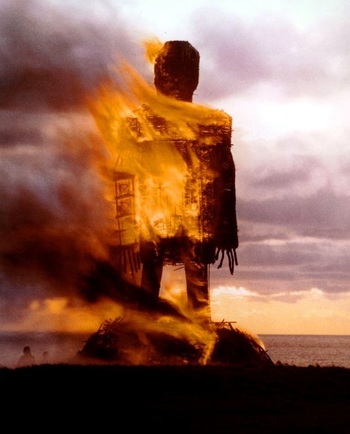
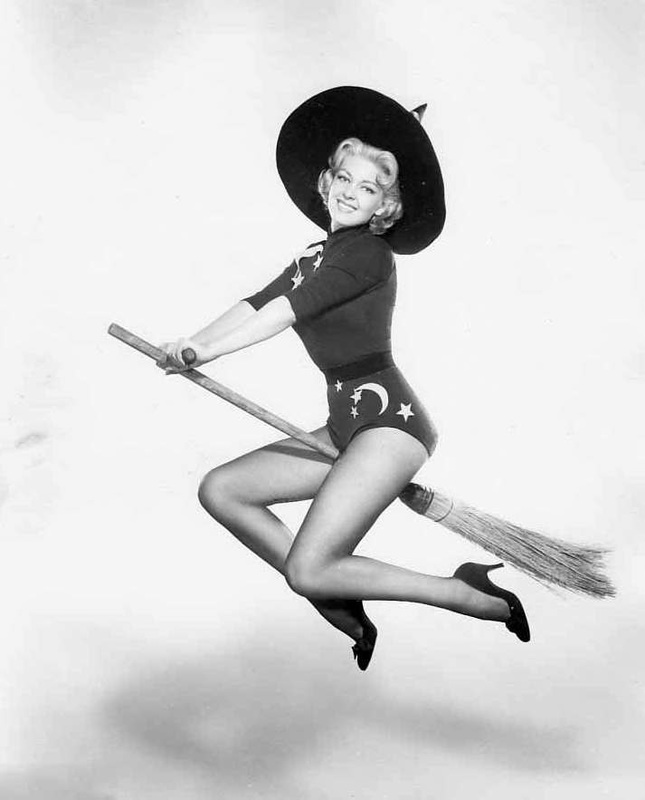
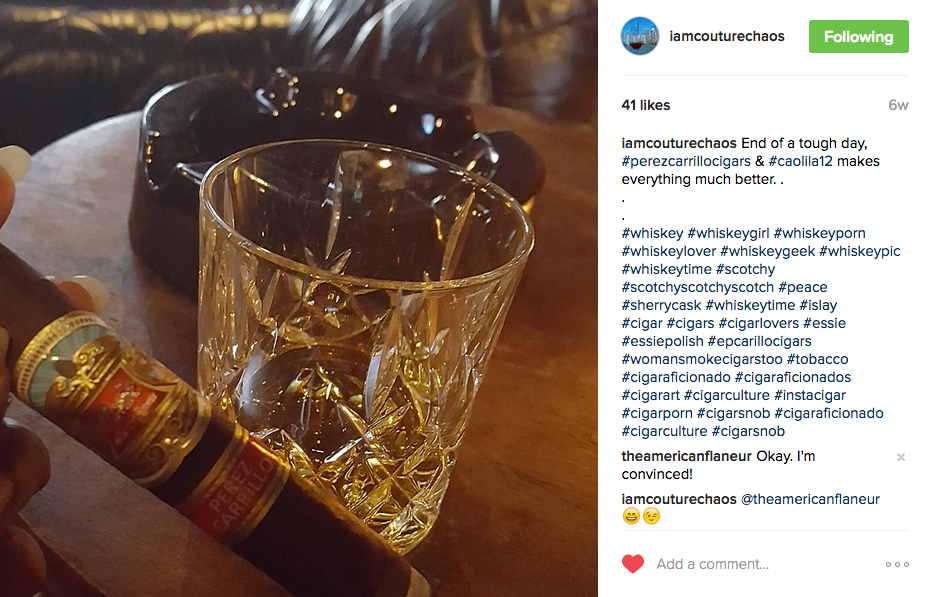





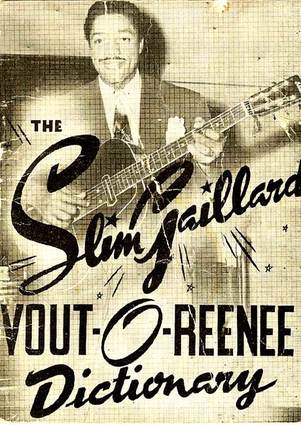



 RSS Feed
RSS Feed